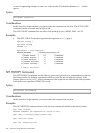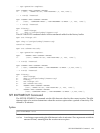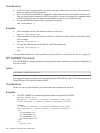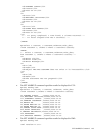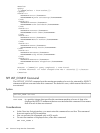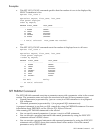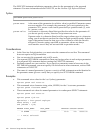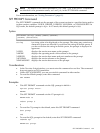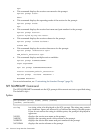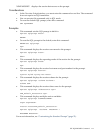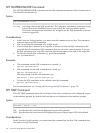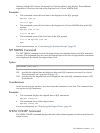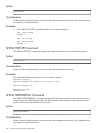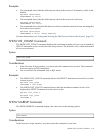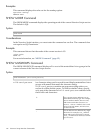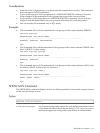
SQL>
• This command displays the session user name for the prompt:
SQL>set prompt %user>
dba1>
• This command displays the operating mode of the session for the prompt:
SQL>set prompt %mode:
SQL:
• This command displays the session host name and port number for the prompt:
SQL>set prompt %server>
sys0101.mylab.mycorp.net:18650>
• This command displays the session schema for the prompt:
SQL>set prompt "Schema %schema:"
Schema USR:
• This command displays the session data source for the prompt:
SQL>set prompt "%datasource SQL>"
TDM_Default_DataSource SQL>
• This command displays multiple session variables:
SQL>set prompt %USER@%SCHEMA>
super.super@USR>
SQL> set prompt %SERVER@DATASOURCE>
nvs0101:23000@TDM_Default_DataSource>
SQL>set prompt ”%schema NVSCRIPT> ”
NVSCHEMA NVSCRIPT>
For more information, see “Customizing the Standard Prompt” (page 53).
SET SQLPROMPT Command
The SET SQLPROMPT command sets the SQL prompt of the current session to a specified string.
The default is SQL>.
Syntax
SET SQLPROMPT [string] [%USER] [%MODE] [%SERVER]
[%SCHEMA] [%DATASOURCE]
string
is a string value to be displayed as the SQL prompt. The string may contain
any characters. Spaces are allowed if you enclose the string in double quotes.
If you do not enclose the string in double quotes, the prompt is displayed in
uppercase.
%USER displays the session user name as the prompt.
%MODE displays the operating mode of the session as the prompt.
%SERVER displays the session host name and port number as the prompt.
%SCHEMA displays the session schema as the prompt.
110 Neoview Script Interface Commands



